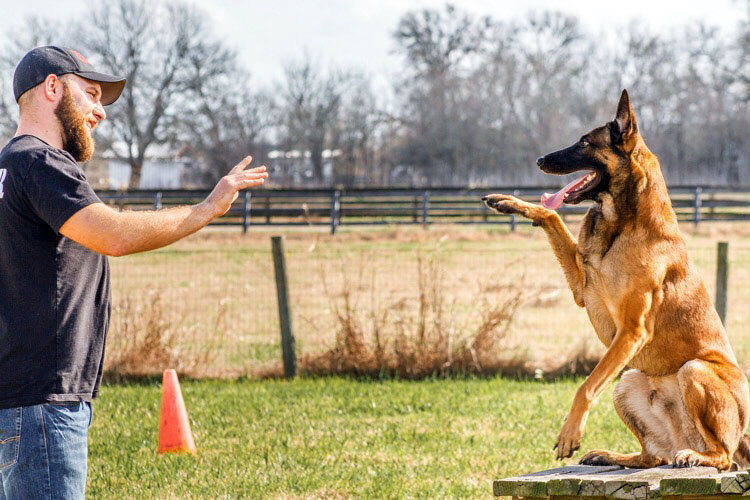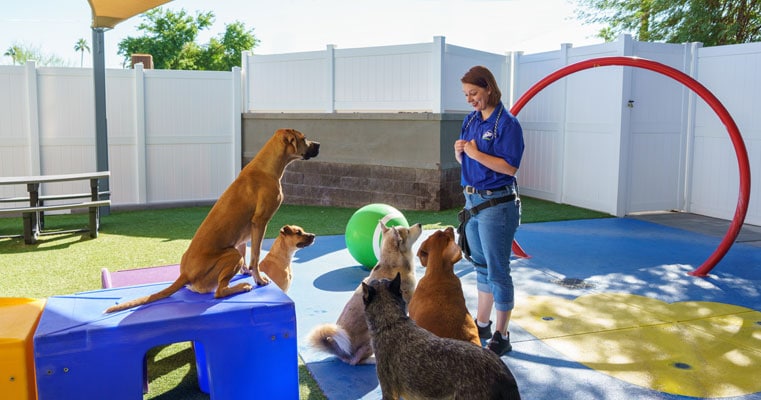Novice's Guide to Effective Dog Training in your home
Successfully training a pet dog in the house needs a nuanced understanding of canine habits and effective communication methods. Establishing clear training goals, using premium incentives, and maintaining uniformity throughout relative are important elements. Integrating training right into daily routines can boost both involvement and retention. Many amateur fitness instructors come across obstacles that might impede development. To browse these complexities successfully, it's necessary to explore several key aspects that can transform your approach and lead to an unified partnership with your pet dog. What basic concepts should every beginner grip to make certain success?
Recognizing Canine Behavior
Comprehending pet dog habits is essential for reliable training and promoting a harmonious partnership between human beings and their canine buddies - Puppy Training. Dogs connect mainly via body language, articulations, and faces, making it important for owners to analyze these signals precisely. Identifying habits such as tail wagging, grumbling, or cring can provide insights right into a canine's emotion and objectives
In addition, comprehending the natural reactions of pet dogs, such as their pack mindset, helps owners develop leadership duties within the household. This is important for developing a structured setting where pet dogs really feel secure and are much more receptive to training. Canines are additionally affected by their socialization experiences; very early direct exposure to numerous environments, individuals, and various other animals can significantly form their actions later on in life.
Common behavioral concerns, such as aggressiveness, stress and anxiety, or excessive barking, usually come from misconceptions or unmet demands. Observing and dealing with these concerns promptly can avoid rise and make sure a favorable training experience. By cultivating a deep understanding of dog behavior, owners can tailor their training methods to suit their canine companions, eventually bring about a well-behaved and pleased animal.

Vital Educating Tools
A fully equipped training area can substantially improve the effectiveness of pet training in your home. Necessary training tools ensure that both the trainer and the pet dog can engage in effective sessions that foster understanding and bonding.

Purchasing a durable chain and a comfortable, well-fitting collar or harness is vital for safety and security and control. These tools assist develop limits and make sure the pet dog stays safe during training. In addition, a designated training area, without diversions, aids focus for both the dog and the trainer.
Training aids such as training pads, cones, or dexterity devices can likewise enhance the experience by introducing selection and obstacles. Finally, having a notebook or digital application for tracking progression can be important, enabling you to note successes and areas for improvement. Making use of these necessary tools will certainly produce a positive training atmosphere and lay the foundation for reliable discovering.
Creating an Educating Routine
Establishing a consistent training regimen is necessary for effective pet training at home. go to my site A well-structured regular not only assists in reinforcing wanted behaviors however likewise supplies your canine with a sense of security and predictability. To produce a reliable training regular, begin by recognizing particular training objectives, such as basic commands, leash strolling, or house-breaking.
Pick a marked time each day for training sessions, ideally when your pet dog is responsive and sharp. Sessions must be short, about 5 to 15 minutes, to preserve emphasis and prevent tiredness. Uniformity in timing and environment will improve your dog's understanding experience.
Integrate training right into daily activities to strengthen abilities. For instance, practice commands during walks or mealtime, which integrates finding out right into all-natural routines. Furthermore, stay adaptable and readjust the routine as needed, fitting your dog's energy levels and mood.
Positive Reinforcement Strategies

When executing favorable reinforcement, it is important to pick benefits that are motivating for your canine. High-value treats, such as little pieces of chicken or cheese, can be especially reliable throughout training sessions. Furthermore, varying the rewards can keep your canine's rate of interest and enthusiasm.
Start with straightforward commands, like "rest" or "remain," and progressively progression to a lot more complex jobs. Consistency is vital; guarantee that all member of the family make use of the same commands and benefit systems to prevent complication.
Moreover, it is essential to remain individual and stay clear of aggravation. Dogs, like human beings, learn at their own pace. By promoting a supportive training atmosphere through positive support, you can enhance your canine's discovering experience while enhancing the bond between you and your furry buddy, laying the foundation for effective training outcomes.
Usual Training Obstacles
While educating a pet dog in your home can wikipedia reference be a fulfilling experience, it commonly comes with a collection of usual difficulties that can examine both persistence and uniformity. One common concern is disturbance. Pet dogs may become quickly averted by noises, activities, or perhaps fragrances in their atmosphere, making it hard to maintain their focus during training sessions.
Another obstacle is incongruity in commands and support. If family participants use various hints or rewards, it can hinder and confuse the dog development. Establishing a unified approach is necessary for effective interaction.
Furthermore, canines can experience disappointment or anxiety, specifically if they do not recognize what is anticipated of them. This can cause unfavorable actions, such as barking or eating.
Finally, the timing of reinforcement is essential. Postponed rewards can lessen the performance of favorable reinforcement, as pet dogs may stop working to connect the habits with the incentive.
Conquering these challenges calls for commitment, clear interaction, and a structured view it training plan - Puppy Training. Recognizing and attending to these common barriers will lead the way for an extra enjoyable and successful training experience in your home
Conclusion
In verdict, successful canine training in your home necessitates a thorough understanding of canine habits and reliable interaction methods. By establishing clear training objectives and utilizing top notch treats together with favorable support, the training procedure becomes much more satisfying for both the trainer and the dog. Uniformity, patience, and flexibility are vital elements that assist in knowing. Ultimately, integrating training right into everyday routines enhances the bond between pet and proprietor, making the experience both efficient and pleasurable.
Establishing a constant training regimen is necessary for efficient pet dog training at home.Positive support methods are basic to efficient dog training, promoting wanted habits via rewards instead than penalty. By promoting an encouraging training atmosphere through positive support, you can enhance your pet dog's learning experience while enhancing the bond in between you and your furry friend, laying the groundwork for successful training outcomes.
In final thought, effective dog training at home requires a comprehensive understanding of canine habits and effective communication strategies. By establishing clear training objectives and utilizing high-grade treats together with positive support, the training process comes to be extra rewarding for both the fitness instructor and the pet.